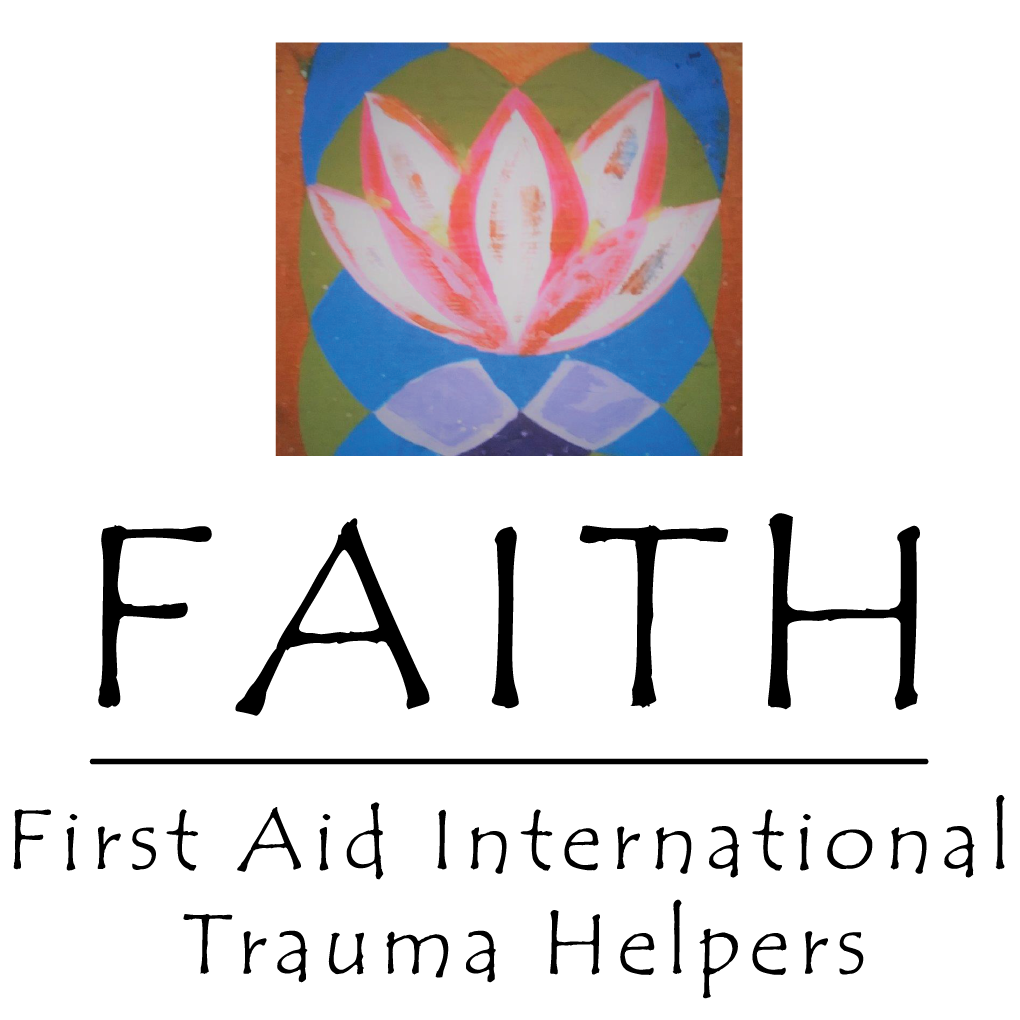Frequently asked Questions
- Who is behind the FAITH project?
We are a secular, politically independent, non-profit small group of professionals who have come together in 2016 to face the challenges of the so-called “refugee crisis”.
- What exactly is the first aid approach?
It is a training course for first-aiders, inspired by the medical first-aid course, which must be completed in order to obtain a driver’s license and which trains lay people to carry out life-saving emergency measures until medical help arrives.
First aid for traumatized people consists of:
- Educating traumatized people. A trauma causes deep confusion among those affected; people no longer know themselves, and they lack a realistic perception of their surroundings. Being aware of this helps affected people to better understand their states of mind.
- Small simple psychosomatic interventions. As we know, the effect of a traumatic event reaches deep into the organism, especially of the nervous system. Small but neurophysiologically effective exercises should help the organism to recover faster from a state of numbness and unreality, and return to a normal kind of self-regulation and ability to perceive surroundings realistically.
- Why did you choose a psychosomatic approach?
Traumas cause physical symptoms – which is why physical support is needed to mitigate such disorders. In addition, a physical approach avoids that a traumatized person sinks back into their traumatic memories. These traumatic memories should be left to a possible psychotherapeutic treatment at a later time.
- What is so special about this method?
- It is very simple and can be applied in even the most basic environments, e.g. refugee camps
- It can be conducted by trained laypeople
- It largely avoids triggers, which would put the traumatized person into a new state of horror and terror, as if the trauma were reappearing
- “What helps the traumatized also helps the helper” – i.e. avoiding burnout among the helpers
The method is based on
- Education
- Practicing simple but neurophysiologically effective body exercises
- Who is our project aimed at?
- It is aimed at trauma helpers who work with traumatised people and it conveys basic practical skills in how to deal with traumas. Since 2016, we have successfully trained native-language trauma helpers who have been helping fellow refugees in their own language. You can download the booklet on this website in many different languages. A training booklet for so-called “multipliers” is under construction.
- Per our experience, the project is also well suited as a school project because basic trauma knowledge should be part of general education.
- In particular, the project is aimed at countries and institutions across the globe that are receiving and accommodating refugees. It promotes standards that should be considered when accommodating traumatised people in refugee camps and shelters. Our aim is to raise awareness that anywhere in the world, trauma first aid should be available to refugees after a severe trauma.
- Where can I order the Trauma First Aid Manual?
“Ein Kurs in Erster Hilfe für traumatisierte Menschen (A Course in First Aid for Traumatised People)”, AJZ-Verlag Bielefeld, ISBN 978-3-86039-039-9
- What happens if trauma first aid is not given to severely traumatised people?
Trauma first aid is the attempt to prevent or alleviate severe post-traumatic stress disorders that can become chronically distressful for the individual.
At the same time, the consequences of severe traumatisation can also be a high burden for entire societies. And, as we know today, uncounscious traumatisation will very likely afflict even next generations and may arise again as transgenerational traumatization.
Trauma first aid is an important asset in combating the causes of flight and terrorism.


